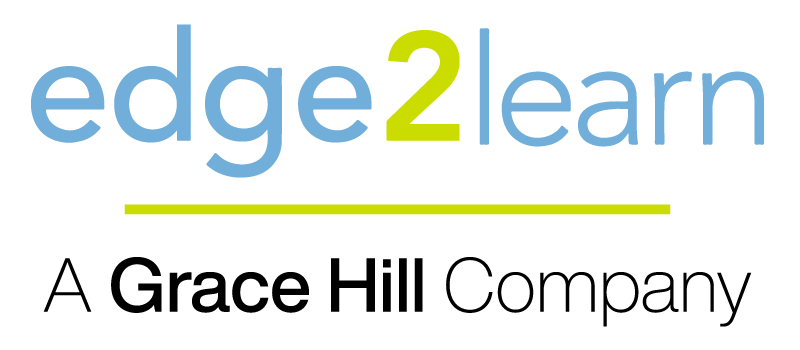
When I am conducting multifamily training in a group, I tend to ask a lot of questions. I believe the more I can understand them, the better chance I have of helping them improve their performance. I have always found it interesting that when I pose the question, “Why do you do it that way?” the response I often receive is, “That is the way it has always been done,” or “I don’t know.” Sound familiar?
We are creatures of habit, and most of us find comfort in regularity. But, is this a good thing? How much did you do today at work that was simply a repetition of yesterday? Did you drive the same route to work? Did you park in the same space and walk the same daily path? Was the order of your morning leasing office routine the same?
While we need our routines, it is also important to contrast them with something out of the ordinary every once in a while. When we choose to do something different in multifamily training – to walk into unknown territory – great things can happen. Problems can be solved. New ideas are born. Musician Joe Bonamassa once said, “If I feel like things are getting into a routine, I want them to be different. I need to keep improving and keep moving forward.”
In the book, The Power of Habit: Why We Do What We Do in Life and Business, author Charles Duhigg, writes about the importance of employees changing their routines if they are going to market their brand effectively and achieve a high level of success. While this book is filled with golden nuggets for personal and professional growth, I would like to hone in on the concept of creating new habits as a way to replace a routine at work. The common saying, “old habits die hard”, is one that comes to mind as I reflect on the thousands of shopping reports I have reviewed over the years. While not every leasing professional is a fan of the shopping report, it tells a priceless story through the customer’s eyes. It must be told. Their words can expose a leasing professional in need of a change in their routine.
- Daily leasing routines can become boring. Bored leasing professionals lose their effectiveness.
- There is a fine line between confidence and breaking over into too comfortable territory. When a leasing professional becomes too comfortable in their role, they can become sloppy and even disinterested in their presentation.
- Employees need to see things from a different perspective. This can only happen when they disrupt their comfortable routine.
In the book, Duhigg shares the following five effective steps that a person can take to replace an old routine with a new one.
- Identify the Desired Response. Work on one thing at a time. Start small and finish big!
- Select a Cue. Choose a location and time.
- Design Some Carrots. Establish accountability. Track progress and celebrate wins.
- Set up Some Sticks. Write down your goal. Share it.
- Practice the New Routine Every Day for 30 Days. The structural changes that underlie habits are triggered only by extended, consistent practice.
While researching, I found this humorous yet timely quote by noted author and motivational speaker Jim Rohn, “If you don’t like how things are, change it! You are not a tree.” But even a tree doesn’t stand there and complain about its current situation. It does something. If planted by a sidewalk or too close to a house, even a tree can cause change. My point is that we have great potential to cause positive change in the leasing office by replacing our ineffective routines with new ones, but we must examine the results, determine the plan of action, and take action. In his five steps to replace a routine, Duhigg presents us with a great roadmap to begin the journey.
If we dig deeper and examine the leasing process, we find that as a whole our industry falls short in two very critical sales areas; attempting to close the sale and following up with customers. Pinpointing weak sales routines in these two areas could transform your leasing results and the industry as a whole.
Did the Leasing Professional Attempt to Close the Sale?
Data: During Q1 2019, Ellis completed 11,906 industry shopping reports as part of their First Quarter 2019 Benchmark performance comparison. The results revealed that leasing professionals attempted to close the sale only 49% of the time. In Q4 2018, this number was 48%. Are they forgetting to ask customers to lease? Do they not know what to say? What is driving this low number?
Training and Tools: While not all property management companies have a formal sales training program, many do. Those who do not have an internal multifamily training staff, often bring in outside trainers to fill in their gaps. I am confident that closing the sale is part of their conversation. At a minimum, employees who are shopped are familiar with the questions and they understand what is required of them. Basically, they are given the answers to the test. Even at the most basic sales level, a leasing professional understands that they are there to sell something and that means attempting to close the sale. In other words, employees know what to do, yet they are not achieving the goal. Their routine isn’t working. I have watched and facilitated many role-playing sessions over the years, and you would be shocked by the number of sales people who take their presentation right to the end and then do not ask the customer to lease. They thank them and send them on their way—to the competition.
Replacing the Routine: Let’s apply Duhigg’s five steps here. If the desired response is to directly ask the customer to lease the apartment every time, we must determine what the current routine is, and then replace it with a more effective one. Talking this out can be very helpful. Sometimes the solution is so obvious that we don’t see it!
- What is the goal of the leasing presentation?
- What do you require to secure an apartment for move-in? Can a customer move-in to your community with no money and no approved application?
- Is there any reason why or situation where you would not ask a qualified customer to leave a deposit and complete an application?
- If the customer dislikes the apartment or shows signs of dislike, are you still required to ask them to lease? (Please, say yes!)
- Do you think the customer expects you to ask for a deposit and application fee? Is paying for a service something the customer experiences every day?
- Is there a certain point in your presentation when you do ask the customer to lease and explain the deposit and approval process? Is that point consistent or does it vary? Do you inform the customer of what is required to lease the apartment before you even leave the office?
- If you could choose the perfect time and place to ask the customer for the deposit, where and when would it be?
Do your leasing professionals know why they are achieving success in this area or why they are not? Many employees operate in their comfortable routines and their actions are not intentional. Whether they are successful or not, they often just keep moving forward in their same routine. I challenge you to sit down with your team and discuss this particular area of the leasing process. Use these questions as a launching pad for discussion. You might be shocked by some of their answers, but they will be very telling. These questions can act as a disrupter because they will cause a person to slow down and evaluate their current leasing routine while they consider how to replace it. This is where great things happen!
Did the Leasing Professional Follow-Up with the Customer?
Data: We know that few sales are made on the first contact with the customer. Following up with your customers is the most crucial and important part of your marketing strategies. In 2018, Ellis Partners in Management Solutions gathered leasing professional follow-up data on 50,218 customer contacts. Shockingly, 49% of customers were not contacted by anyone following their initial visit. One of my most favorite success stories is about how 13,000 hand-written thank you notes built a thriving business. I share this article in all of my multifamily training classes when we reach the follow-up portion of the sale. It is a powerful example of what can happen when follow-up is made a priority. You might consider distributing it to your team.
Training and Tools: Similar to asking for the deposit, the follow-up question is also in most training programs, is included on the Ellis Shopping Report, and is an important step in the leasing process. Interestingly, many companies even have a follow-up policy and yet follow-up is not consistently taking place. It is another case of an incredible missed opportunity. Why is our industry follow-up percentage so low? What does the daily follow-up routine look like in your leasing office? Why do leasing professionals not follow-up with customers? This generally boils down to two things – lack of accountability and/or lack of focus. Here are four of the most common excuses I receive from students in my multifamily training classes:
- I don’t have time.
- We don’t have thank you cards.
- We are not allowed.
- I forget.
Replacing the Routine: After a leasing professional expresses their reasons for not following-up, I present them with general sales data such as how few sales are made on the first contact, email is the fastest and least costly method of follow-up, and mail is the least used but most emotionally impactful form of follow-up. I also share our industry follow-up trends which are collected by Ellis Partners in Management Solutions on an annual basis. Then I let them connect the dots.
Industry follow-up numbers for 2018 based on 50,218 Ellis Shopping Reports.
- 49.2% received no follow-up after their initial visit
- 39.6% of customers received an email after their 1st visit.
- 28% of leasing professionals followed up by telephone.
- 4.6% of leasing professionals followed up by mail.
When it comes to follow-up conversations, it is most beneficial to take your employees down the value road. Until they understand the value associated with doing it, they will not see a benefit to replacing their current routine (which unfortunately in many cases is no routine). Here are some questions to launch your conversations.
- When was the last time you received a hand-written note or card in the mail? How did it make you feel?
- Do you think most customers lease on their first visit?
- How long will it take you to write one thank you card?
- What is the true value of a potential resident? Let’s consider your average monthly rent and the average tenure of a resident.
- Based on the value you just calculated, how much will you gain if they lease as a result of your follow-up contact? How much do you stand to lose?
- What is the value of the five minutes you spent writing that thank you card?
Too often, leasing professionals are moving so fast in their daily routines that they do not consider the details. They feel they don’t have time to follow-up with customers until you show them they really do. Walk your employees through a math lesson. They must believe it is worth their time to do it before they become willing to replace their old routine with a new one. I wish I could tell you that training and policies were enough, but the data does not support it. Using Duhigg’s five steps, apply accountability to get the job done. Use the positive results to inspire them to keep on going!
A routine keeps us on task and keeps us moving when things are hard. It gives us space and a structure to work within, because we can almost do it with our eyes closed. Replacing a routine means changing and getting out of our comfort zone. Change does not always result in fantastic things happening, and the familiar routine is comfortable and relatively safe. However, in the end, we will never know what works better until we are willing to replace an old routine with a new one.
Read more like this from Edge2Learn

Maria Lawson
Vice President of Training and Development
Edge2Learn / Ellis Partners in Management Solutions
Edge2Learn is an eLearning company whose focus is the Property Management Industry and specializes in property management training and multifamily education. With over 30 years of experience and a commitment to increase industry excellence, we are passionate about engaging learners to maximize benefits for both companies and employees. Aligned with a well-respected industry leader, Ellis, Partners in Management Solutions, the Edge2Learn platform provides a turnkey solution for clearly identified needs and opportunities. We prepare learners to deliver a superior customer experience and also reduce corporate liability risks and overall employee turnover.


